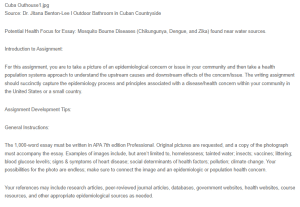A Picture Is Worth 1000 Words

Note. Picture in Cleveland, Ohio
Homelessness
Homelessness is one of the significant public health issues affecting Ohio and other parts of the United States. The photo featuring a tent on a sidewalk reflects the problem that is becoming increasingly acute for people in cities and suburbs. The homeless suffer from acute environmental settings and health hazards like poor hygienic practices, vulnerability to diseases, and restricted access to appropriate medical treatment. This essay will discuss upstream factors contributing to homelessness in Ohio, the downstream results linked to homelessness, and the middle-range solutions DNP-prepared nurses can contribute to regarding the issue.
Overview of Ohio and Homelessness
Ohio State is situated in the Midwestern United States of America and has a population of about 11.7 million people. Even though the state is leading in industrial and agricultural development, it has significant gaps, especially in large cities—Columbus, Cleveland, and Cincinnati. Currently, homelessness in Ohio is on the rise, with more than 10,000 people being homeless in Ohio at any one time, as stated by Barbu (2019). This problem impacts more senior citizens, parents, minorities, and individuals with mental illness or substance dependence. The issue of homelessness and acceding rates are moving in the right direction, and this, combined with infectious diseases and chronic health problems, pushes the Ohio healthcare system even further.
Moreover, the state’s unsavory winter months further complicate matters for homeless individuals. Homeless people are at high risk of succumbing to hypothermia as they become exposed to the environmental conditions, leading to high mortality rates due to the condition. According to Elgaddal et al. (2022), homeless people are 3.5 times more likely to die from hypothermia than other people in the population. This statistic clearly explains why the issue of homelessness as a public health issue should be solved promptly in Ohio. Homelessness is rooted in social factors such as poverty, unemployment, high rates of poor and inadequate housing, and lack of health care access.
Upstream Causes of Homelessness in Ohio
Two upstream factors significantly contribute to homelessness in Ohio: poverty, the non-availability of affordable houses, and high unemployment rates. The accessibility of affordable housing in towns like Columbus or Cincinnati has significantly deteriorated because housing prices have outpaced wages (National Alliance to End Homelessness, 2024). This difference becomes even more acute in the case of low-income people when people allocate over 50 percent of their revenue for rental services and cannot afford to purchase necessary goods and services, like medicines, clothes for children, or food. Based on Roth (2024), Ohio has an affordable housing shortfall of more than 250,000 units, which increases homelessness in the area.
Subsequently, the second upstream factor is employment. Ohio has been experiencing high unemployment rates due to shifts in the structural mechanism of the economy. Current concerns include high unemployment and under-employment rates, especially among the youth laid off from manufacturing industries that were once the principal economic vehicles of the state (Bureau of Labor Statistics, 2020). COVID-19 made matters worse. The restrictions caused by the virus led to the closure of many businesses, especially service and retail businesses, and massive layoffs. Lack of steady wages means people cannot afford rent or mortgages, and if they cannot meet payments, they are evicted and become homeless. The causal link between these two factors is clear. If alternative forms of a roof over one’s head and essential employment are not considered, several groups of the population feel the threat of homelessness looming large on their heads.
Downstream Effects of Homelessness
Unresolved homelessness has the potential to negatively impact population health in Ohio in several downstream ways: disease transmission and reduction in life expectancy. Individuals facing homelessness deny themselves shelter and live in unhygienic conditions; thus, they are likely to contract transmissible diseases such as tuberculosis, hepatitis A, and influenza. A study by Roth (2024) revealed that using many people in a single shelter and poor washing facilitates the spread among people experiencing homelessness.
Another severe impact is a decline in life expectancy. Homelessness is characterized by a significantly higher prevalence of the following health conditions: diabetes, hypertension, and mental illnesses, among others, and these conditions are often left unattended due to health care disparities. Bedmar et al. (2022) also noted that homeless persons have a life expectancy of 12-15 years lower than the general population, primarily because of unaddressed health issues, substance dependency, and exposure to harsh weather conditions. Unless these effects are tackled, Ohio residents will continue to suffer from suboptimal health, and the already strained public health system will be overwhelmed by avoidable deaths as well as aggravated disparities in health.
DNP-Prepared Nurse Role
Homelessness is a crucial area where DNP-prepared nurses are responsible for care and policy reform. In direct care, they can proceed with practice in street medicine or mobile health clinics to address necessary needs, including dressing changes, immunization service, counseling, and substance use disorders among people experiencing homelessness. They also provide homeless patients with longer-term resources such as housing, feeding, and other essential services.
On the advocacy side, DNP nurses engage policymakers in advocating for solutions to the underlying contributing factors to homelessness, including housing and health, and championing housing-first models that focus on providing shelter (McWilliams et al., 2022). Ethical concerns include the rights of homeless people to self-determination and freedom in terms of their health and shelter. Understanding the tensions between public health and patient-centered care, DNP-prepared nurses must provide care that strengthens rather than erases people experiencing homelessness identity.
Conclusion
Ohio currently faces a severe housing problem, a social issue that needs to be addressed. There is a need to address the root causes of homelessness, including unemployment and the absence of adequate and affordable housing, if the communities are to stop expanding the homeless population. Lack of proper measures will continue to bring these effects, and much more that is yet to be seen, such as the growing spread of diseases and diminished life expectancy, which already puts pressure on the healthcare facilities of Ohio. Homeless individuals benefit from DNP-prepared nurses who focus on delivering homeless health care as well as addressing system factors that cause homelessness. Therefore, medical professionals should address different challenges to enhance the health of Ohio’s vulnerable populations.
References
Barbu, J. (2019). Home. COHHIO. https://cohhio.org/
Bedmar, M. A., Veny, M. B., Lelong, B. A., Mut, F. S., Pou, J., Moyano, L. C., Toro, M. G., & Yáñez, A. M. (2022). Health and access to healthcare in homeless people: Protocol for a mixed-methods study. Medicine, 101(7). https://doi.org/10.1097/MD.0000000000028816
Bureau of Labor Statistics. (2020). Employment and unemployment among youth -Summer 2020. https://www.bls.gov/news.release/pdf/youth.pdf
Elgaddal, N., Weeks, J. D., & Reuben, C. (2022). QuickStats: Death rates attributed to excessive cold or hypothermia, by urbanization level and sex — National vital statistics system (U.S.), 2018–2020. Cdc.gov, 71(2). https://doi.org/10.15585/MMWRmm7107a6
McWilliams, L., Paisi, M., Middleton, S., Shawe, J., Thornton, A., Larkin, M., Taylor, J., & Currie, J. (2022). Scoping review: Scope of practice of nurse‐led services and access to care for people experiencing homelessness. Journal of Advanced Nursing, 78(11). https://doi.org/10.1111/jan.15387
National Alliance to End Homelessness. (2024). State of homelessness: 2024 edition. National Alliance to End Homelessness. https://endhomelessness.org/homelessness-in-america/homelessness-statistics/state-of-homelessness/
Roth, M. (2024, March 14). Report: Ohio’s affordable housing gap shrinks slightly. COHHIO. https://cohhio.org/report-ohios-affordable-housing-gap-shrinks-slightly/
ORDER A PLAGIARISM-FREE PAPER HERE
We’ll write everything from scratch
Question 
Cuba Outhouse1.jpg
Source: Dr. Jitana Benton-Lee l Outdoor Bathroom in Cuban Countryside
Potential Health Focus for Essay: Mosquito Bourne Diseases (Chikungunya, Dengue, and Zika) found near water sources.
Introduction to Assignment:

A Picture Is Worth 1000 Words
For this assignment, you are to take a picture of an epidemiological concern or issue in your community and then take a health population systems approach to understand the upstream causes and downstream effects of the concern/issue. The writing assignment should succinctly capture the epidemiology process and principles associated with a disease/health concern within your community in the United States or a small country.
Assignment Development Tips:
General Instructions:
The 1,000-word essay must be written in APA 7th edition Professional. Original pictures are requested, and a copy of the photograph must accompany the essay. Examples of images include, but aren’t limited to, homelessness; tainted water; insects; vaccines; littering; blood glucose level/s; signs & symptoms of heart disease; social determinants of health factors; pollution; climate change. Your possibilities for the photo are endless; make sure to connect the image and an epidemiologic or population health concern.
Your references may include research articles, peer-reviewed journal articles, databases, government websites, health websites, course resources, and other appropriate epidemiological sources as needed.
Essay Requirements:
A1,000-word essay, excluding cover page and references
An abstract is not required
Write using APS 7th Edition, Professional Paper Style
Sample APA 7th Edition, Professional Pape
